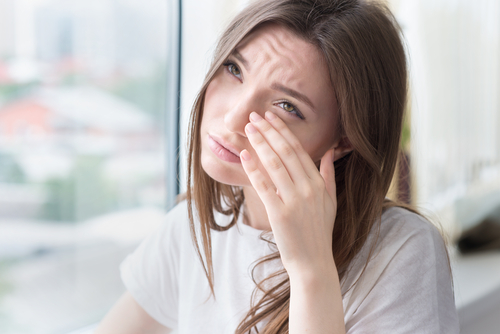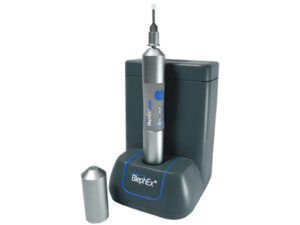What is Blepharitis?

Do you have itchy or inflamed eyelids and eyelashes? These are common symptoms of a condition called blepharitis.
The condition often recurs and may be hard to treat. While blepharitis can be uncomfortable and unsightly, it’s not contagious. Keep reading to learn more about blepharitis and how to treat it!
Symptoms
Signs and symptoms of blepharitis include:
- Itchy eyes
- Seeing flakes on your eyelashes
- Having eyes that feel gritty
- Increased sensitivity to light
- Watery eyes
- Blinking more frequently
- Greasy looking lids
- Crusted eyelashes
Usually, the symptoms of blepharitis are worse in the morning after waking up. While one eye can be affected, most people with blepharitis have the condition in both eyes.
Causes
There are different causes of blepharitis, including:
- A bacterial infection
- Eyelash lice and mites
- Rosacea
- Herpes simplex virus
- Clogged oil glands in your lids
- Allergic reactions to eye makeup, medications, or contact lens solutions
- Dandruff of the scalp and eyebrows can cause an infection if your lid area has a reaction to dandruff or if it’s excessive
Blepharitis Complications
Although blepharitis can’t cause vision loss, it can lead to the following complications if left untreated:
- Eyelashes growing abnormally, losing color, or falling out
- Scarring of the lids
- Chronic pink eye
- Excess tearing
- A chalazion or cyst inside your eyelid due to blocked oil glands
- A stye, which is a painful infection at the base of your lashes caused by bacteria buildup
- Dry eye as a result of abnormal oily secretions
- Discomfort when wearing contact lenses due to the eyes not having enough lubrication
- Corneal infection
Types of Blepharitis
There are three types of blepharitis, including:
Anterior Blepharitis
Anterior blepharitis occurs when inflammation develops around the base of your lashes or hair follicles. With this form of blepharitis, it can appear that crusts or oily flakes are forming at the bottom of the eyelashes.
Posterior Blepharitis
With posterior blepharitis, you’ll experience inflammation inside your eyelid. If you develop this inflammation, it involves the meibomian glands found inside the top and bottom of your eyelids.
Mixed Blepharitis
This is a combination of anterior and posterior blepharitis.
Blepharitis Treatment

BlephEx™ is a new, revolutionary technology that effectively treats blepharitis. The treatment is performed by your eye doctor at the Short Hills Ophthalmology office and takes about 6 to 8 minutes to complete.
Before treatment, your eye doctor will place numbing drops in each eye to ensure maximum comfort. After putting in the drops, your eye doctor will then gently and precisely use the hand-held device with a micro-sponge to clean the edges of your lids and lashes.
This action exfoliates your lids, removing or considerably reducing the presence of any crusting, debris, and bacteria. Typically, the treatments are repeated at frequent intervals if you have a severe case of blepharitis to control it and maintain healthy eyelids.
Benefits of BlephEx™ Treatment
- It’s a fast, painless in-office procedure
- BlephEx™ can save you money by reducing how much you have to spend on artificial tears, eye drops, and prescriptions
- The treatment is well tolerated
- Your eyes will start feeling better, leading to less irritation
Short Hills Ophthalmology is pleased to offer this innovative and highly effective treatment for blepharitis. BlephEx™ alleviates symptoms of chronic and acute blepharitis. It also addresses infection and reduces inflammation so you can have comfortable, healthy vision.
Do you think you may have blepharitis? Schedule an appointment at Short Hills Ophthalmology in Clifton and Short Hills, NJ, today!



